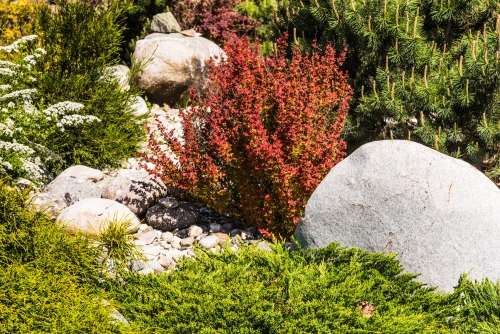We use cookies to make your experience better. To comply with the new e-Privacy directive, we need to ask for your consent to set the cookies. Learn more.
The Complete Guide to Designing & Building A Rockery for Your Garden
Rockeries, rock gardens or alpine gardens are types of gardens that have stones, rocks, and boulders as a prominent landscape feature. They give your garden that much-needed natural feel and in addition serve numerous functions.
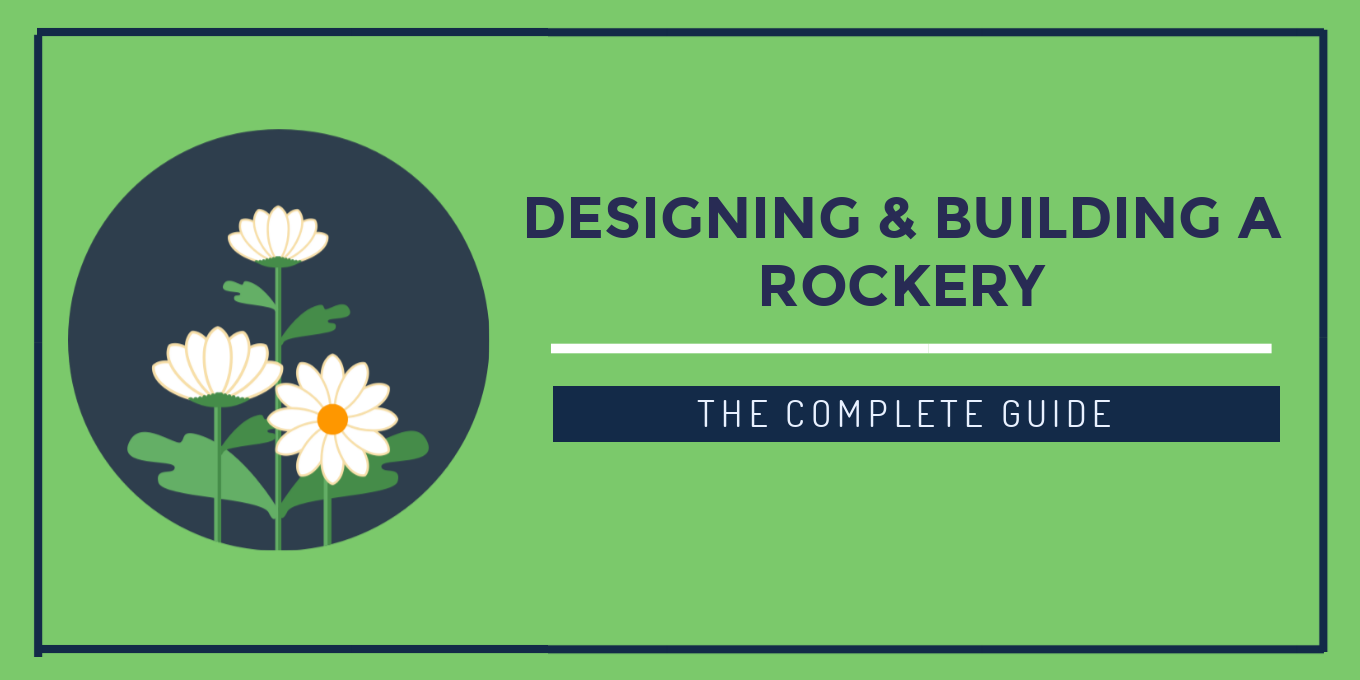
Desigining & Building a Rockery
Rockeries, rock gardens or alpine gardens are types of gardens that have stones, rocks, and boulders as a prominent landscape feature. They give your garden that much-needed natural feel and in addition serve numerous functions.
There is a number of ways rockeries can be used:
For aesthetic purposes
Rockeries can be quite amazing. Stones look and feel natural and go well with green surfaces. The transition is almost seamless and the combination will look very natural. People who don’t have experience with gardening may even think that your garden spontaneously grew. Rock gardens can also go well with rock and brick houses.
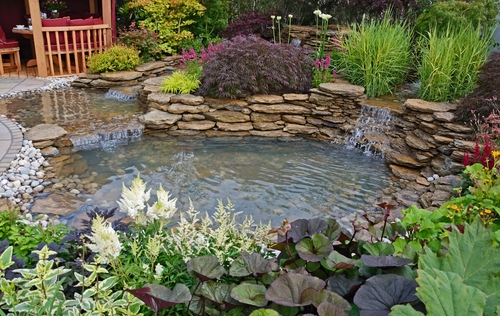
For versatile plant habitats
It’s easy to create a variety of habitats within the small confines of a rock garden. Rocks can be placed in such a way that plants that need a lot of sunlight can thrive on its sunny face, whilst shade-loving plants can be sheltered in its shadow.
For preventing erosion
Lots of households have a problem with erosion. This is especially common if your home was built on a slope or some other type of erosive ground. While rockeries cannot fully prevent the issue, they can significantly reduce it. The homeowner should start by choosing hardscape elements and go from there. Gravel will also be important as you can put it in the nooks and crannies and fill the ground making it stronger and more resistant.
For dry climates
If you like gardening but don’t have good climate for it, rockeries can be an alternative solution. By placing lots of stones in your garden, you are able to create a natural appearance. Of course, you will also have plants and grass but in a significantly smaller quantity. Rocks can be used as a way of camouflaging lack of plant life. Keep in mind that in dry climates maintaining flowers can be a real chore and will require a lot of watering. So, you can go with a thrifty solution which is a rockery.
For exploiting rocky slopes
What was previously perceived as an issue in your yard could be turned into its greatest advantage. A rocky slope could be given a new look and matched with other parts of your yard in order to make your garden absolutely rock!
For those who are tired of mowing their lawns
It is normal to get tired of regular lawn mowing after a while. A good way to reduce the frequency of mowing is to rearrange parts of your yard into a rockery. It takes some effort, yes, but it is well worth it. And what is most important – it will save you buying a new lawnmower every now and then.
As meditation retreat
No wonder Zen monks used rocky gardens for their retreat; there is a particular tranquility and connectedness with nature that they evoke. In the middle of the hustle and bustle of the daily life, use our expert advice below to easily turn your garden into a spa corner and meditation retreat par excellence. You’ll be feeling at one with nature in no time!
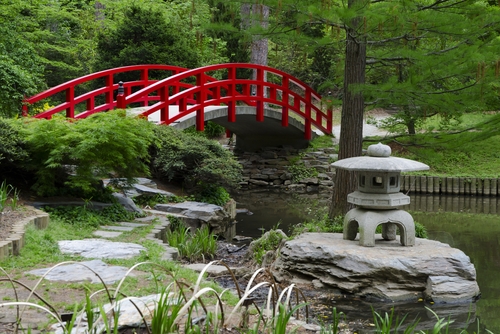
The origins of rockeries
Stones and rocks that we have in our gardens and around us, in nature, were sculpted for thousands of years by the supreme creator – Nature itself. People have always used rock as a primal source of inspiration and tried to imitate it. The more the imitation resembled the original, the better. So, rocks were always used as decorative elements, particularly in early Chinese and Japanese cultures. There was even a horticultural manual of a sort, written by Tachibana no Toshitsuna in 11th century Japan. The advice on how to arrange rocks and boulders was found useful at the time.
The Japanese gardens at the time resembled Chinese styles of decoration and the symbolic function of rocks was present as well - rocks were arranged in groups to symbolize the haven of Eight xian (Immortals) from Chinese mythology, the mountain Penglai in China, which is known as Horai in Japanese myths. The rockeries then became extremely popular in two historical periods and the interest in them spread to every corner of the globe.
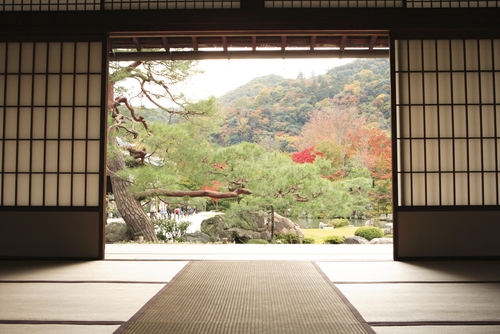
During the spreading of Zen Buddhism in Japan after 12th century, Zen gardens introduced lots of moss, pruned trees and bushes, along with the rocky elements. On the whole, normal plants and flowers weren’t commonplace.
The spread of Zen gardens was linked with the concept of wabi-sabi – a traditional aesthetic principle that sums up the Japanese sensibility towards nature and life, and their ever- lasting fleetingness and imperfection.
During the Zen period, the word “wabi” referred to a quiet, rustic simplicity, while “sabi” was an expression for beauty in old age, a patina of a sort. These Buddhist aesthetics were a reaction to perfectionism in traditional, highly decorated Chinese culture. Today, this is also opposed to the Western culture and the Ancient Greek ideal of beauty, which always strived towards perfection. In contrast to this, wabi- sabi concept promotes acknowledgment that all life is transient and imperfect, and should be valued and enjoyed as such.
The other period in human history marked with its obsession with rockeries was the Victorian period. During that time England acquired a strong taste in all things exotic, including alpine plants as well. Creating a miniature world was a passion and people wanted to grow their own garden according to Nature’s model.
Today, rocky gardens are one of the most popular types of gardens not only for esthetics and appearance but also for the various other benefits they bring along.
Important things to be considered before starting the project
While creating a perfect alpine garden, there a few important things you have to consider beforehand. Here are some of the elements that play a big role in setting up your rock garden and making it what it is:
Type of soil
Soil is important as a basis upon which everything else is built. While plants also depend on sunlight and air, they receive most of the nutrients from the soil allowing them to grow big and strong. The perfect type of soil is one that easily crumbles. This allows air and water to pass through it. Insects and microscopic organisms play a big part as well.

Make sure to call an expert before starting your garden. Check the soil and whether it will be able to take such a project. Even though it is possible to create a rockery with minimal plants, it is much better with lots of greenery. The last thing that needs to be considered is the presence of minerals as your plants will not be able to survive in a barren soil.
Related: Getting to know your garden soil.
pH
pH refers to the level of soil’s acidity. If you have a nice lawn or a swimming pool, you probably know how important this small factor is. Small changes to pH value can have a big impact on plant life. Acidity is especially important for microscopic organisms as they die in low pH soil. Ideally, you should try to find a proper level of acidity (for example, lawns require from 6.0 to 6.8 pH) so that plant life can survive and thrive.
Type of plants
Climate and soil play a big role when it comes to what types of plants you can have in a rockery. But you should avoid overplanning everything; try to have some fun instead! If your soil is good enough, you should consider getting some of these plants: thyme, pasque flower, campanula, bellflowers etc. They are common at higher altitudes and will work perfectly in combination with a rocky garden.
Keep in mind that colour scheme is not the only factor essential for a good-looking sprawling garden. Typically, alpine plants require less water so you might as well consider growing drought-resistant plants. Overall, smaller plants are much better for a rocky setting as they feel natural and at home.
Most homeowners are already aware of soil’s quality. Before making a rock garden, you’ve probably had some other plants so there is already a good chance you will know what to expect from it.
Using other natural elements
Besides impressive monumental rocks and stones, other natural elements that you can use to create a beautiful rockery may include some of the following:
A natural rise
A typical rock garden utilizes slopes and natural rises. This feature of land and due to the use of its native rock, it can look like a mimicry of the natural environment surrounding it. However, if your original landscape doesn’t have any slopes and your home is not built in a hilly area, you can always create smaller natural rises yourself by transferring a large amount of ground and stones and using them as the foundation for a slope.
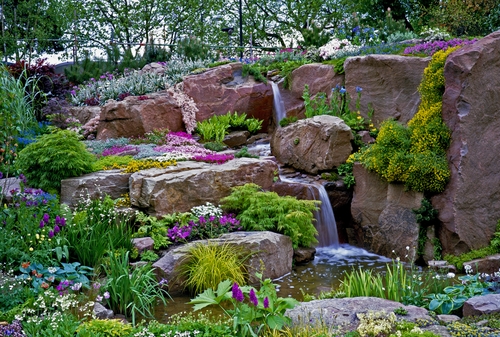
Soft banks
Consider that your alpine garden may have a completely different look - it can be built on a bank and its rocks could be used to prevent erosion. This, of course, depends on the layout of your backyard and whether or not you’re near a river or other source of water.
Nooks
Perfect place for your alpine arrangements might be stone walls and nooks that can be found in them. Let them provide a foothold for your plants. This is a very effective way of achieving “natural chaos” even though it was created by you.
Moss
Typical for a Zen-inspired look, moss will make a transition from stone to plants look seamless and natural. They provide a feeling of longevity; as if these stones were there for much longer than they actually were. It also adds another element to a garden.
Existing rock outcropping
Use the additional plants to further beautify the natural look of the existing outcropping. You can even create a false outcropping so it feels that the stones have eroded over time.
Sand
An unexpected element if you want to give your rocky garden a soft feel and introduce a contrast to hard stones. Although sand has its place in a rock garden, you should use it scarcely. While it provides a nice contrast and a granular impression, it doesn’t fit in larger quantities and may even disrupt the whole composition. If you want to use sand more extensively, why not try a beach garden?
Gravel
Gravel is extremely efficient for almost any type of a garden, especially for rocky gardens. It can be used as a filler for holes and you can also use it for pathways. By spraying a little bit of gravel around bigger stones, you are achieving natural imperfection.
Trees and wood elements
Almost everyone has a tree in their backyard. Given that stones are a natural creation it makes sense to pair them with various wooden elements. You don’t necessarily have to add trees; just by having a wooden patio or wooden chairs and table, you can accomplish a lot. Needless to say, plastic furniture and elements should be avoided at all costs as they are hard to match.
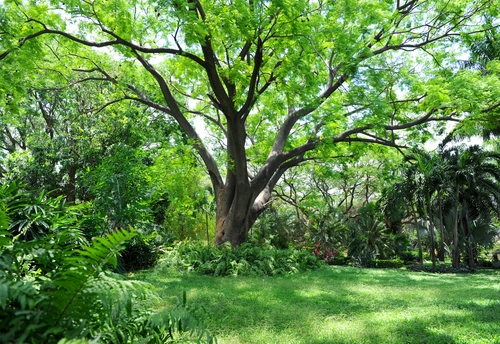
Water
Like in nature, water and water surfaces are omnipresent. That being said, it would make a lot of sense having a small pond in your backyard. You can even surround this small pond with plants that are common for water areas. Water lettuce is a good example (if the climate allows it). The main focus of rockeries is recreating a landscape that is common for mountainous areas. It is meant to be your small retreat that you can escape to.
Types of rock gardens
What kind of rock gardens exist? Well, it depends who you ask. In fact, this is the best thing about them – you are given so much space and you can make lots of cool decisions making your rockery unique. As you read in the previous section, there are various modifications which you can add and tinker with. Here is our personal list of rock gardens:
Chinese rock gardens
As previously mentioned, China and Japan were the birthplaces of rockeries. Chinese gardens are not only a place for rest but also carry lots of symbolism. If you wish to create something like this, you should probably learn more about Chinese culture beforehand. These gardens have an amazing oriental vibe and you will enjoy every moment spent in them.
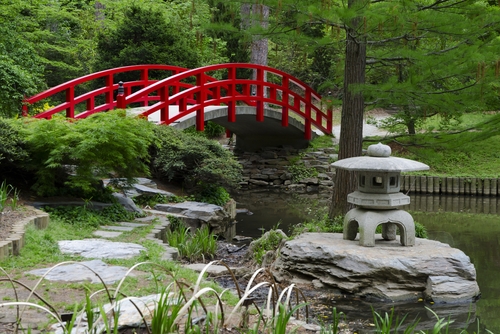
Japanese rock gardens
Unlike Chinese gardens, Japanese are a bit more chaotic. They involve more plant species and they also introduced moss and bushes. However, they still maintain a sense of tranquility and symbolism. Always remember that Japanese gardens are not meant to be perfect – they need to be chaotic in order to convey the right message.
British rock gardens
Britain was regarded as the first country to introduce oriental rock gardens to Europe. It is focused on having a larger stone with a natural outcrop. It should resemble the ones which you can otherwise find in nature with exposed surface and strata. In most cases, they will have erosion lines with similar angles. Grottos and follies are also common for this type of gardens. Plants should be adapted to your climate but if possible, you can use some of the alpine plants mentioned previously in the list. When it comes to plant life and general layout, British gardens should resemble formations found on the Alps and other European mountains.
American rock gardens
Soon after, rockeries were adopted by Americans. There are lots of similarities between these two garden types with one big difference: different types of rocks were used. As you can presume, stones being used are common for the American continent. Unlike British, American gardens are much more relaxed in terms of rules. You can basically use whatever plants you’d like as long as it makes sense. The best way of explaining an American rockery is a garden that uses local materials. In a way, it is a thrifty garden.
Alpine tuck-ins
This is a form of British garden. It uses a similar type of Alpine plants with a small twist: there are many more crevasses in the rocks. These holes are then filled with Alpine plants. Keep in mind that these gardens are also a bit more chaotic. While British gardens are all about creating proper stone lines, alpine tuck-ins are meant to emphasize plants growing from stones.
Wall gardens
Wall gardens are a bit trickier to pull off. Most gardens have stone crevasses where they tuck-in the plants. In this case, the gardener will use stones shaped as walls or blocks. They have to be as symmetric as possible. You can even place several walls near each other to get a better impression of isolation. Plants are usually placed on top of walls’ flat surface. Sometimes, they will be placed on the side of the wall which makes growing a bit harder. Ideal plants for this type of a garden are all those species that can hang or that don’t require too much soil.
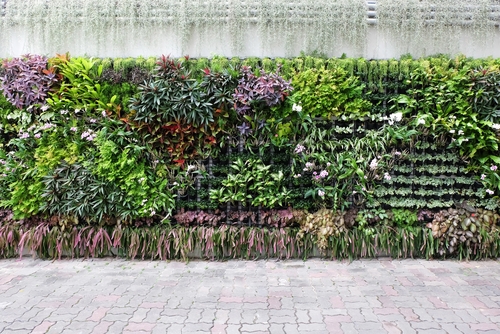
Gravel gardens
Gravel is a great material for rockeries due to its small size and the fact you can place it anywhere. You can use it in smaller or larger quantities based on your needs. Gravel garden focuses on the use of gravel as the main material. Of course, you can still add larger rocks and stones but most of the space will be filled with gravel. Another reason why this material is so great is the fact that you can have a pathway made of gravel which will make for a seamless transition.
Garden with containers
Containers can also be amazing for rockeries. Even though they are not ideal and they look a bit artificial, they are an easy solution. You can place whichever plants in these containers regardless of the soil in your backyard. All you have to do is buy soil and place it in these containers. This is simple for watering and maintenance and is a good solution if you have limited options.
Woodland garden
This is probably the trickiest type of garden that requires lots of planning and preparation. Woodland gardens are basically rock gardens with lots of trees. While shrubs are relatively common, there aren’t many rockeries with trees. If you don’t have any trees in your backyard but wish to create something special, you need to start planting them as soon as possible. For all of this to work, you will need a couple of years; trees make the best impact when they grow a bit. You will also have to leave enough space for them to grow properly. You can create an even better landscape if your home and nearby elements are made of wood.
Freestyle
If you have lots of different things on your mind but don’t know how to put them together, perhaps you should do some freestyling. Rockeries provide a lot of leeway for creativity and there are no hard and fast rules. You can use trees, shrubs, various plants, containers, artificial ponds etc. Use all the knowledge acquired in this article to create a small haven for you and your family.
Conclusion
Rocks are not only natural but they are functional. Lots of homeowners create these gardens as a way of reducing watering costs and preventing erosion. If you live in a dry climate, stones will fit perfectly and can even camouflage barren yellowish land. They allow you to have a nice flower garden without paying too much. On the flipside, rocks can also be used to reduce unwanted plant growth which is common in some climates.
But even though you might feel excited about having a rockery, you shouldn’t rush things. In a way, these gardens are a small construction accomplishment. It is no longer just about plants; you also have to consider all other elements which may come in handy. By making a proper mixture, you will have the best garden in the neighbourhood.
If you have the right idea but you’re not certain how to put it all together, make sure to contact the experts. This will save you lots of time, you won’t have to do the physical work and the end results will be simply amazing!
